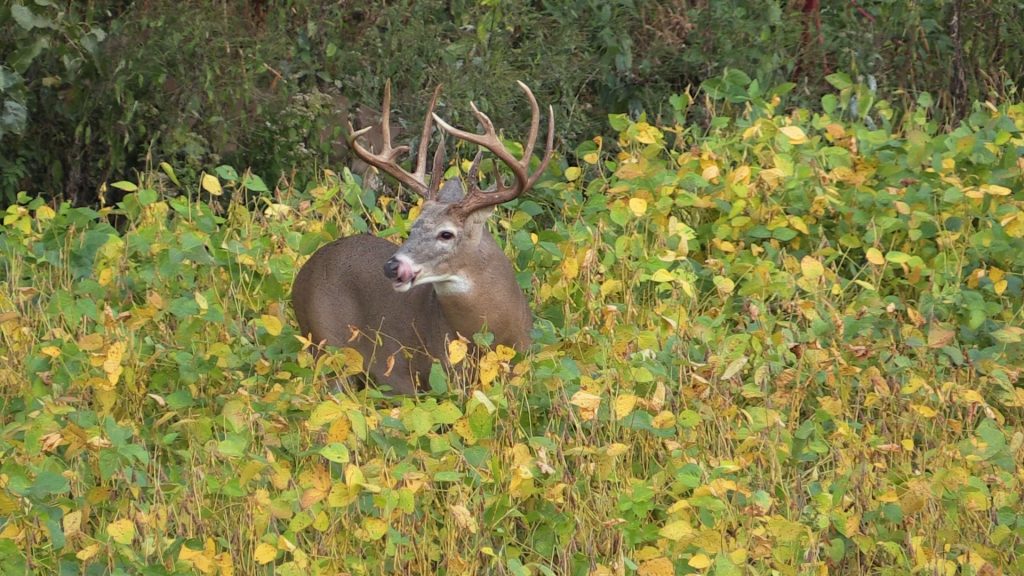
Earlier this week I sprayed all of my foodplots, which are located on 4 different properties in preparation for planting in the next few weeks. I get asked all the time what my favorite food plot is and I never hesitate to answer … “SOYBEANS!”. Soybeans are attractive to deer from the time they germinate until the last of the grain is consumed in the late winter. Each year I plant roughly 75% of my food plot acreage in soybeans. This allows me to do a rotation of 3 years of soybeans and 1 year of something else in each of my plots.
Many deer hunters in the Midwest wonder why someone would plant soybeans in their plots when there are thousands of acres of soybeans growing nearby in farmers fields. The answer is very simple; those famers fields get harvested in the fall leaving nothing for the deer. In the late season when the crops are gone from the fields and many of them have been plowed under for the winter, a high quality food source becomes a hot commodity for whitetails. In fact, I have never seen anything attract whitetails during brutal winter weather like soybeans. There simply is nothing else available at that time of year that will provide the protein and fat (energy) that soybeans do.
When it comes to selecting soybeans for food plots, there are big differences between various soybean varieties. “Forage” type soybeans have become popular with some food-plotters but after trying them on my own property for 5 years, including in side-by-side tests, I have concluded that forage soybeans are a far inferior choice and really next to worthless in the Midwest farm country. In a food-plot setting, forage-type soybeans may put on more tonnage of browse during the green stage but this happens at a time when high-quality green browse is available everywhere. Independent lab analysis has proven that the quality of the forage in forage-type soybeans is actually no better and in many cases even lower in quality than the browse from other soybeans. Finally, forage-type soybeans offer very little in the way of grain production. Essentially once the soybean plants die in the fall, there is very little left for wildlife to eat in the late fall and winter months.
Some food-plotters simply plant soybean seed they get from farmers. In fact I did this myself for a few years. The problem is that more times than not these soybeans would shatter at some point, meaning the soybean pods would split open and drop the grain onto the ground in the mud or snow where deer and other wildlife could not consume it. It was this major problem with typical ag soybeans that led us at Real World Wildlife Seed to test and develop a blend of soybeans that are shatter resistant. While most ag-type soybeans have a shatter rating, this shatter test is done in the fall at typical harvest time. When we developed Real World soybeans we tested for shatter in March, after the soybeans had stood all winter. Those varieties that stayed in the pods the best were the ones included in Real Worlds soybean blend.
For more information on Real World soybeans go to – www.realworldwildlifeproducts.com
What you plant in your foodplots now can have a direct impact on your hunting success next hunting season. I dont plant foodplots to improve my hunting during the rut. Instead I focus my efforts on making my plots as attractive as possible to deer after the rut. This is when I know I can draw large numbers of deer including the bigger bucks to my properties and hold them there. Then all I need is a cold weather front to get them on their feet and I am then in a great position to kill the biggest buck in the area.